- File your claim immediately at the airport
- Be loud, be vocal
- You need to assume your bag is lost for a minimum of 5 days
- Itemize everything
- Use a concierge service
- Share your story
- Other compensation
- Filing a Lost Luggage Report Probably Won’t Help
- Time Is Not On Your Side
- Not All Airlines Are Equal
- Automated Baggage Tracking Doesn’t Work
- Your Lost Bag May Not Even Be the Airline’s Fault
- Airline Staff Are Caring Professionals
- Your Bag May be Destined for the Lost Luggage Auction
- Carry On Only
- Luggage Tags
- Tight Connections
- Keep Your Proof

What To Do When the Airline Loses Your Luggage
Here is what to do when luggage is lost or delayed on your flight. Nobody from the airline is just going to magically find your bag without you taking steps to make it happen. You need to be your own advocate.
File your claim immediately at the airport
Don’t just assume your bag will come on the next flight. You must file your claim immediately to receive compensation and it helps to start the clock on your claim. Be sure to have all of your information handy, including record locator number, flight number, and description of your bag (including color, shape, size, manufacturer, and any distinguishing characteristics).
Be loud, be vocal
Get in front of a real person (ideally a manager) at the baggage office at the airport. Get their attention. Get them looking for your bag. But remember the phrase, “You catch more flies with honey.” Being a jerk or obnoxious is unlikely to help your case. Be pleasant, but forceful.
You need to assume your bag is lost for a minimum of 5 days
Airlines rarely get bags back to passengers in 48 hours. Most bags that fall into the delayed baggage category make it back to the passenger in 3-7 days. Figure out what you need for a few days and immediately buy those items.
Itemize everything
Keep receipts for everything you buy. How much do airlines have to pay for lost luggage? The answer depends on if the flight was a domestic flight or an international flight.
The airlines are required to reimburse you for delayed, lost or damaged baggage up to $3,300 per person on domestic flights. International flights are covered by the Warsaw Convention, but the current lost luggage reimbursement is around $1,750 per person. Actually getting paid for your lost or delayed luggage reimbursement is another matter with some airlines being very quick and others not.
Use a concierge service
Once you’ve submitted your paperwork and you have your claim information, you might consider hiring a professional. If you have access to high-end concierge services via an elite credit card, a travel membership program, or a corporate travel account, consider putting your concierge or ambassador to the task.
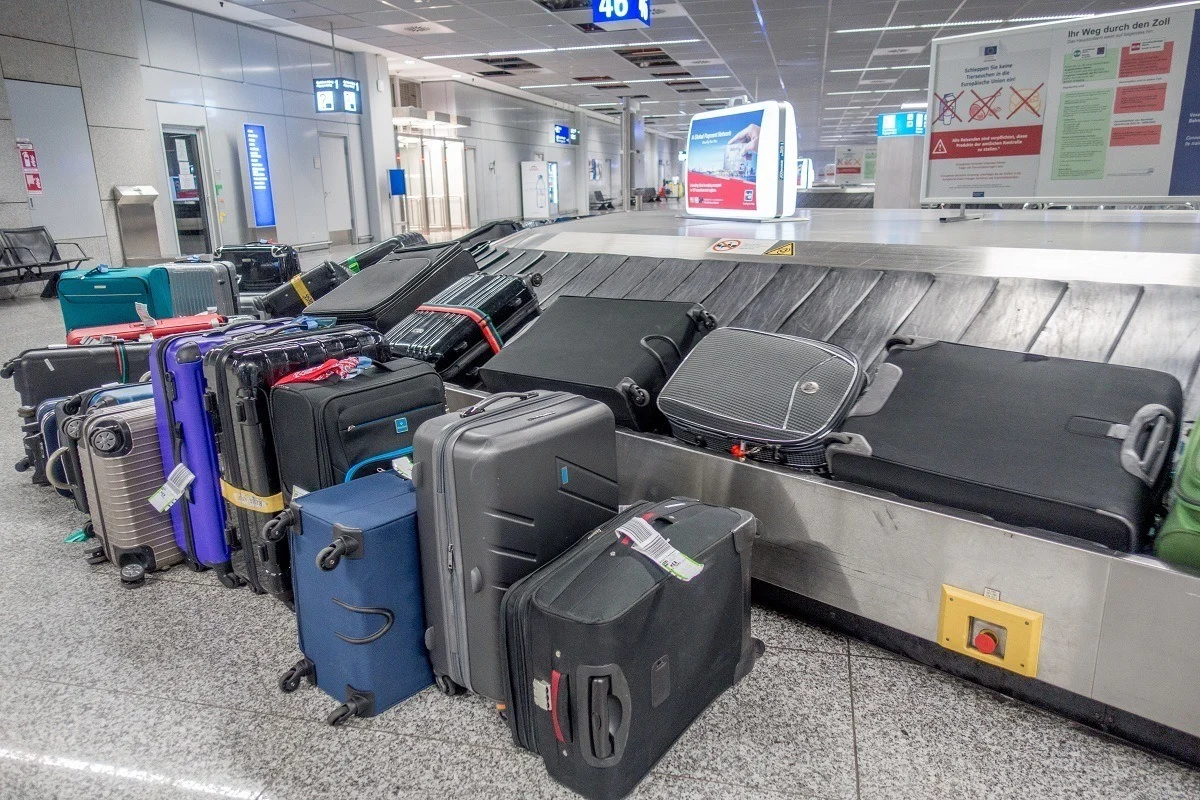
Share your story
After a few days, you will want to take your story to social media. Don’t be a jerk, but share your story and be sure to tag your airline’s social media accounts. Have friends re-share the story, particularly on Twitter. Eventually someone in the airline will pay attention. That’s what you need – a real person in customer service/central baggage office to take interest. They are the people who can help get someone to look for your bag.
Other compensation
You may be entitled to additional compensation if you are flying in Europe (or to/from Europe)! If your luggage is the likely result of flight disruptions/delays/etc., there are passenger rights guaranteed by Europe Union Regulation 261. This is up to $700 for flight disruptions, $1700 for luggage problems, and up to $7000 in other expenses, and even lounge access during the period of your flight disruption. You can pursue claims against the airline on your own, or you can use a service like AirHelp (which we used during our issue with Vueling Airlines). If you are also having flight problems, consider signing up for AirHelp to ease your travel woes.
The Truth About Airline Lost Luggage
Filing a Lost Luggage Report Probably Won’t Help
When your bag doesn’t make it at a destination, you’ll dutifully file your report with the airline in the baggage claim area. If this is a simple issue of delayed baggage, it should show up in the next three days. FAA data shows that delayed baggage usually arrives within 3-7 days. However, if the bag is truly lost, your chances of finding lost luggage after 30 days are cut in half.
Automated baggage tracking is hardly a science. Despite having bar codes, the baggage search process is largely a manual one. It requires an airline representative to manually search the WorldTracer computer system for misdirected bags.
WorldTracer is a computer system used by practically every airline (over 440 worldwide) at over 2,800 airports. To get help with your lost bag, you need to find some way to get the airline to initiate this manual process. Complaining loudly and frequently is your only choice.
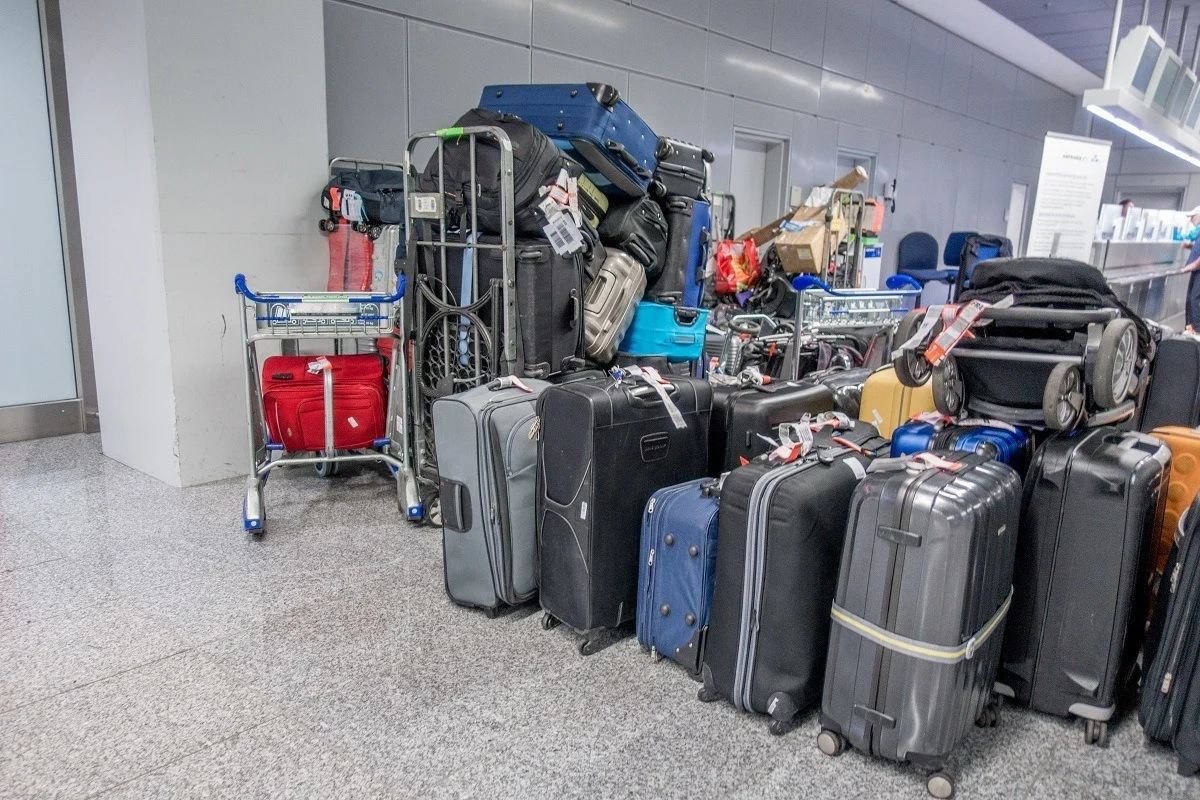
Time Is Not On Your Side
When your bag is lost, time is not on your side. There are a number of key deadlines that you’ll need to observe if you want to see your bags (or receive compensation). Here are the key deadlines:
- 4 hours: Deadline from flight landing to file your complaint with the airline for lost baggage
- 5 days: The time period when the airline transitions your case file from the local airport to the central baggage office. This is the start of getting someone to actually help you.
- 45 days: Deadline to file the Passenger Property Questionnaire (PPQ) with the airline. This form is where you itemize your property and assign value to it.
- 100 days: All bags cycle out of the WorldTracer system. After 100 days, your bags are likely lost forever and can’t be tracked. Luckily, only about 2% of lost luggage is missing forever.
Not All Airlines Are Equal
Some airlines have better luck than others. And some just have bad luck. I was flying on American Airlines. After returning home, I wondered just how often does luggage get lost? Airlines hype that the rate of lost luggage is on the decline, but they frequently overlook delayed baggage statistics (and a delay can be DAYS). The issue of lost vs. delayed baggage may play out in the statics, but the result is the same for the consumer.
In the course of my ordeal, I learned that in the year prior to my trip, American Airlines lost more bags than any other major carrier in the United States. Among top carriers, only discount Southwest lost more bags. [At Southwest, bags may fly free, but they don’t get there.]
In fact, American and U.S. Air (now combined as American Airlines) lost more bags than all other major carriers COMBINED. Eventually, American Airlines surpassed Southwest Airlines in lost baggage.
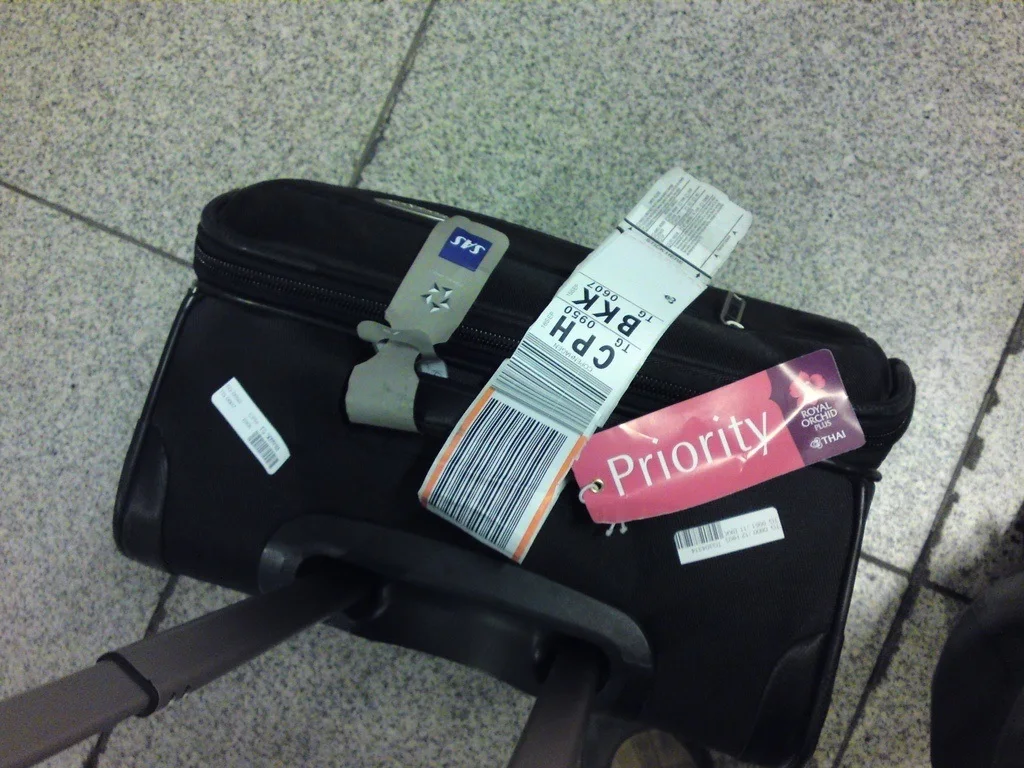
Automated Baggage Tracking Doesn’t Work
A number of airlines are rolling out automated baggage tracking features. American Airlines launched a feature on their app that allows passengers to “Track Your Bags.” You didn’t know about this feature? The AA Baggage Tracker hasn’t been widely publicized, but American Airlines spokeswomen Laura Nedbal is quoted in media stories saying, “It’s [the American Airlines Track My Bag feature] something our customers have been asking for a really long time, and we’re excited to make this available to them.”
Only there’s one small problem: it doesn’t work very well. During my AA lost luggage odyssey, the American Airlines luggage tracker in the app did not accurately show my bag’s location. Not even once. [More on that later.] Other airline’s apps are similarly plagued by inaccurate or completely missing data.
If you really want to know where your bags are, buy some Apple AirTags or Tile Pro and put them in your luggage. It will tell you where you luggage is in real time.
Your Lost Bag May Not Even Be the Airline’s Fault
Most airlines, staff out their baggage operations to subcontractors. As I learned from my lost luggage experience, the relationship between airline staff and these subcontractors can be adversarial. As they argue and bicker over turf and relationships, you suffer.
Airline Staff Are Caring Professionals
During my experience, nearly every American Airlines employee I encountered was a caring professional. They were apologetic. They cared about me and treated with respect. It didn’t result in getting my bag back any faster. It didn’t stop the fact that nearly every American employee gave me incorrect information about my bag. But it did ease tensions and took a lot of steam out of the situation.
Your Bag May be Destined for the Lost Luggage Auction
Unclaimed baggage left at the airport is ultimately auctioned or sold at a lost luggage store like the mega-center in Scottsboro, Alabama. Only there’s one catch, sometimes it isn’t abandoned or unclaimed luggage that ends up there – it may be your lost luggage.
Airlines are murky on the data, but after discussing with airline employees, we’ve become convinced that many lost bags are treated as unclaimed bags and sold off. Seriously, who just abandons their luggage, especially after paying the airlines extra money to be able to check the bag in the first place?
In a way, this amounts to luggage theft by the airlines who sell your bags to these lost luggage operations for profit. Thankfully, the numbers are low, but it does happen.
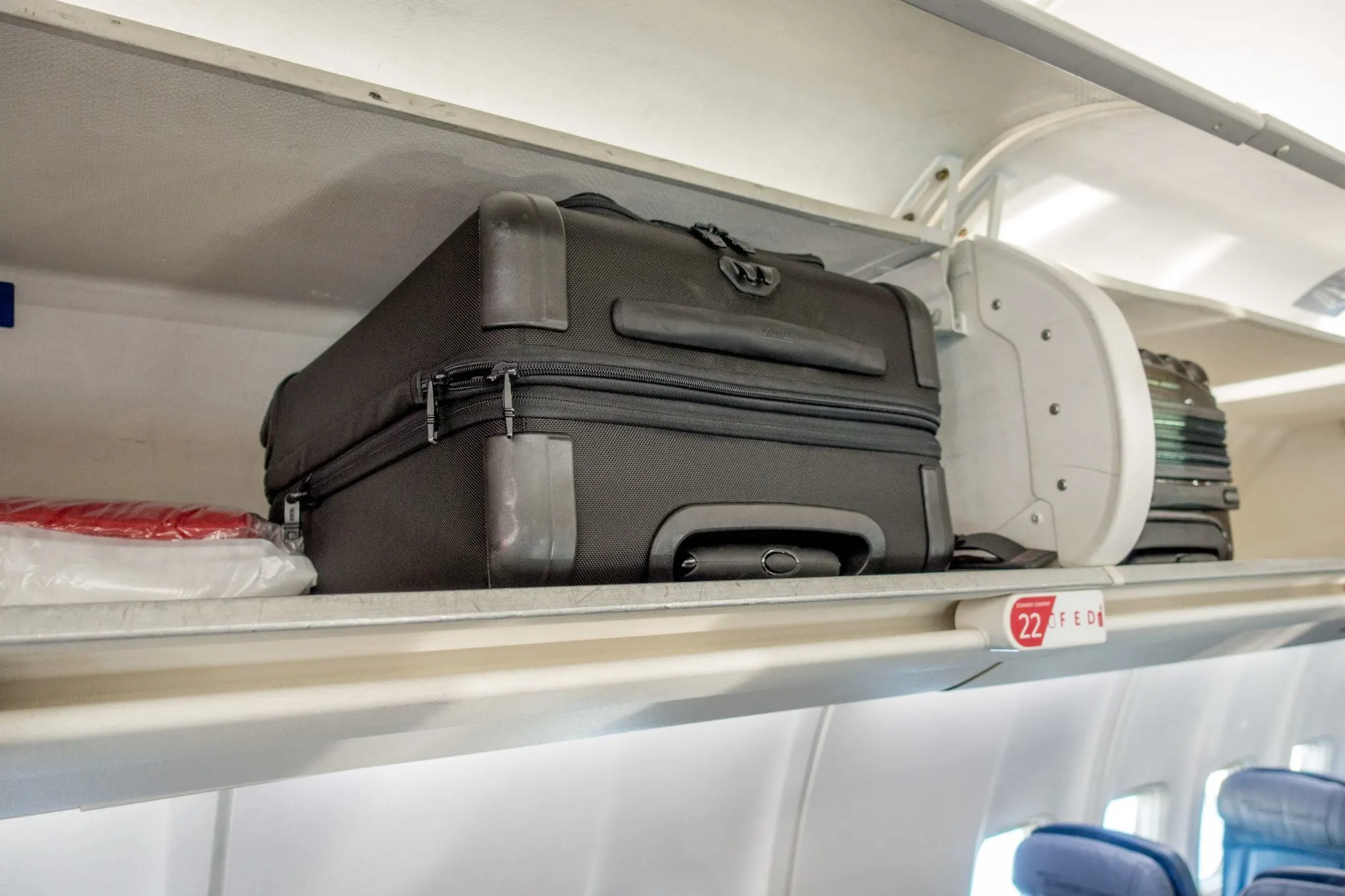
Travel Tips for Preventing Lost Luggage Problems
Carry On Only
If you truly care about your stuff arriving with you, pack carry on only. It’s the only way to guarantee that your luggage will make the flight. The minute you check that bag, you’re opening yourself up to lost or delayed baggage problems. Be sure to check our articles for Packing Tips and also Carry-On Essentials to make your trip go more smoothly.
Luggage Tags
Make sure you have a luggage tag on the outside of your bag. Also, make sure there is a business card or other address identification inside your bag. Remove all luggage tags and luggage barcodes from previous flights to avoid confusing ground staff or electronic bar code readers. This is especially important if the tags are for a different airline than the one you are currently flying!
Tight Connections
Flight connections are the death of bags. Over the years, the airlines have tightened connection times. Think about all the times you’ve had to run to make a flight. Now think about how your bag will get there. Chances are good that it won’t. If you really want your bags to get there, be sure to take non-stop flights (although, as my American Airlines baggage story below indicates, direct flights are not a guarantee that your baggage will arrive).
If you must check your bag and you must have a connection, consider taking a flight with a longer layover. Each airport has a published minimum connection time (called a “legal connection” time). That’s if everything goes according to plan. Now take into account weather, late crews, the ever-vague “mechanical problems,” and air traffic delays and you’re basically screwed. Don’t rely on the airline to plan your connection for you.
Keep Your Proof
When you pack your bag, take a picture of the inside contents. You may need this to prove to the airline what you had with you. It’s not unusual for the airline to lose the bag, and then add the insult in disputing your lost luggage claim. Also, keep your bag claim check separate from your boarding card in a safe place.
Some airlines insist on putting your claim check on the back of your boarding pass. Politely decline and take it with you. The reason is that if you need to be re-ticketed (upgraded to first class) or you miss a flight, you might not get the claim check back (it’s happened to us more than once).
As a pro tip, take a photo of your baggage claim ticket on your phone in case you lose your physical ticket.
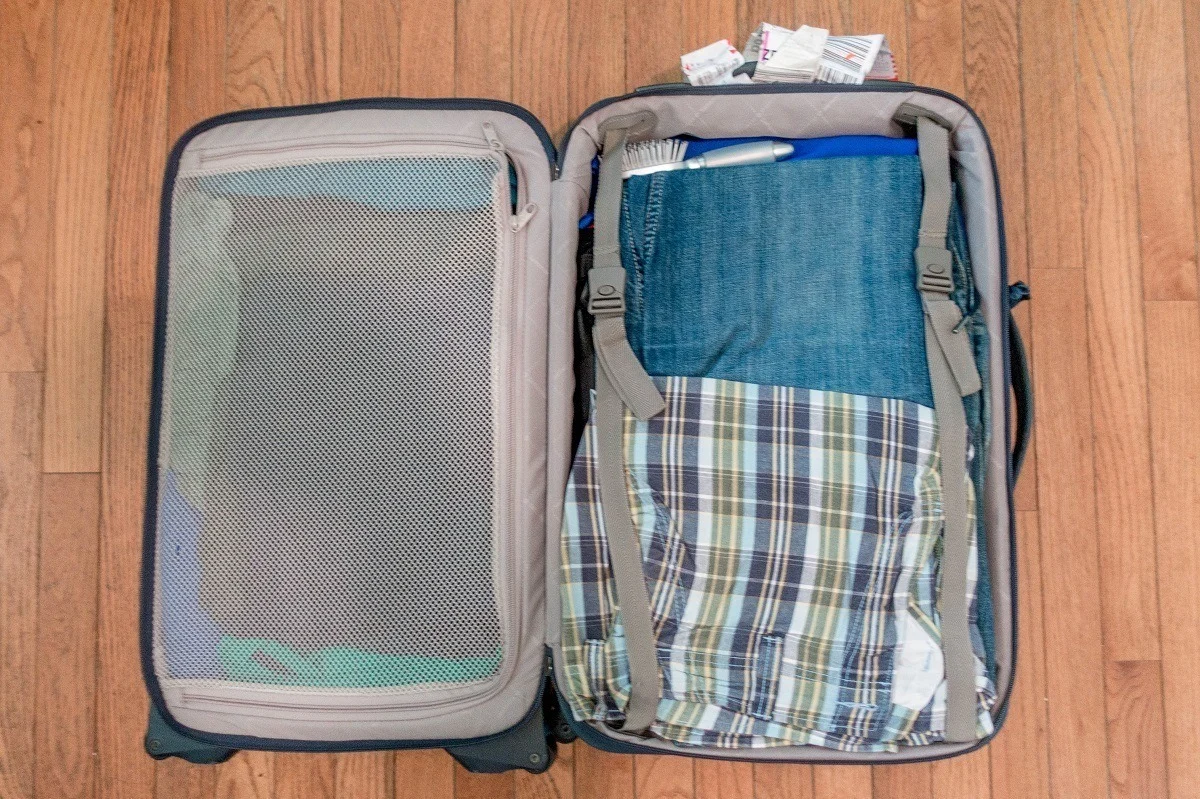
My American Airlines Lost Luggage Story
I recently flew on American Airlines from Philadelphia to Zurich. American is part of the Oneworld Airline Alliance, which sadly has poor coverage in Europe. I was ultimately flying onward to Albania, where I was going to meet up with Laura, but needed to fly on a different airline.
On arriving in Zurich, my bag never made it. Several other passengers also didn’t receive their bags. This was a non-stop flight and there were no tight connections (or any connections at all). I had checked in to the flight early, so it wasn’t a rush. There’s no excuse for my bag not to have made the flight.
According to American Airlines, my bag sat in Philadelphia for five days before being sent onward to Athens…not Zurich. Had AA put the bag on the next flight the next day, it would have caught up to me, but that didn’t happen.
Throughout the entire process, American Airlines customer service staff were extremely apologetic and polite, but I got the feeling they really weren’t doing a whole lot or trying to help. The compassion settled tensions, but did little to resolve the fundamental problem. Things improved slightly once I was put in touch with the American Airlines Baggage Call Center ([email protected]). Note: As of October 2021, the phone number (1-800-535-5225) has been disconnected and the ONLY option to contact them is the form on their website.
In the early days, the airline sent inconsistent and confusing updates. On the same day, different people in the American Airlines Central Baggage Resolution Office told me different things. One agent told me to submit the paperwork for an American Airlines delayed baggage compensation claim, and another told me to wait. One agent told me they would e-mail me the American Airlines Passenger Property Questionnaire and a different agent told me to download the file (you can download the questionnaire here).
To further add to the confusion, on one single day, different AA Customer Service agents told me that my bag was in Philadelphia, Zurich, and Tirana. Obviously, my bag couldn’t be in three countries on two different continents at the same time.
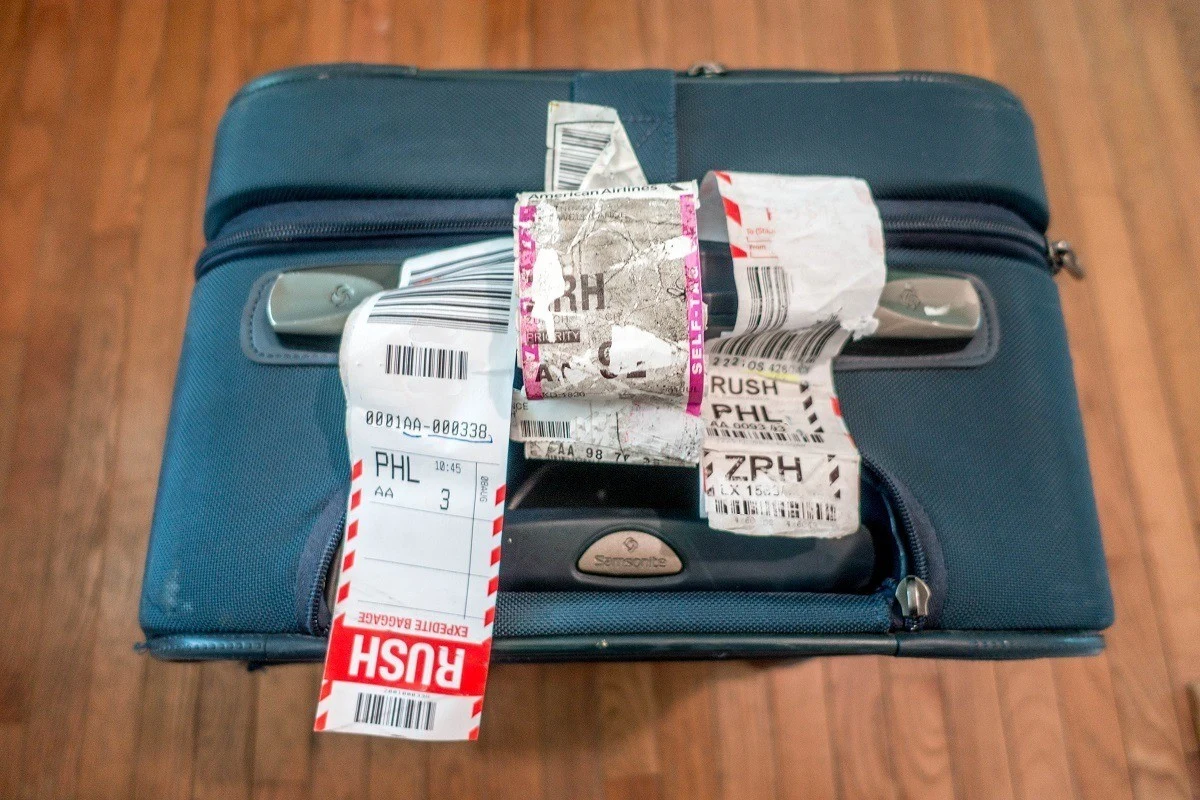
I’ve been able to piece together the story of my bag. It sat for five days in Philadelphia before being flown to Athens, Greece, but I wasn’t in Greece. So the bag went back to Philadelphia, where it sat for a couple of weeks, before being flown to Zurich, who forwarded the bag to Tirana (but I was already home). Tirana forwarded it back to Zurich, who forwarded it back to Tirana, where it sat for a few weeks. Eventually, it flew back to Philadelphia…via Sydney, Australia. Ironically, the American baggage tracking app (AA Track My Bag) showed my bag never left Philadelphia for the entire time.
Yes, I got my bag back. It took 39 days (that’s more than 10% of the year that my bag was missing). Yes, I eventually got paid for the items that I bought while my bag was missing. But I wasted an immense amount of time. I spent over 3 hours on hold from Europe with AA baggage racking up some pretty serious phone charges (which were not reimbursed).
I spent hours following up again and again with American Airlines. That’s time I don’t get back in my life and there’s no compensation for wasted time. We only recently learned the pro trick of using a concierge service to save time (for details, review the section at the beginning of the article).
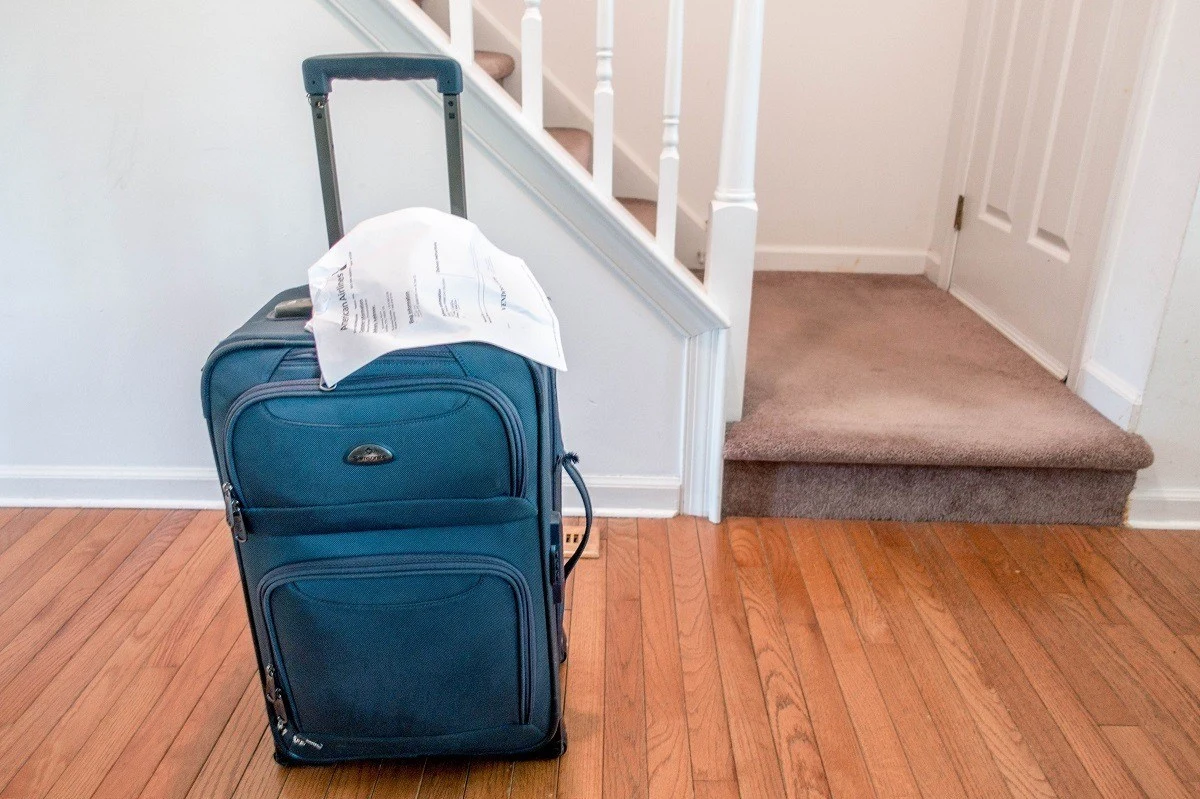
To be honest, I probably fared better than most. I’m an American Airlines Platinum elite flyer. However, I’m not feeling the love from AA these days. I don’t really feel like my loyalty has been reciprocated. So yes, I probably fared much better than some victims of airline lost luggage. Unfortunately, there’s still very little recourse for passengers. And while the airlines claim they are improving, it doesn’t look like it to most frequent fliers.
Do you have an airline lost luggage horror story? Share your story below!
Lance Longwell is a travel writer and photographer who has published Travel Addicts since 2008, making it one of the oldest travel blogs. He is a life-long traveler, having visited all 50 of the United States by the time he graduated high school. Lance has continued his adventures by visiting 70 countries on 5 continents – all in search of the world’s perfect sausage. He’s a passionate foodie and enjoys hot springs and cultural oddities. When he’s not traveling (or writing about travel), you’ll find him photographing his hometown of Philadelphia.